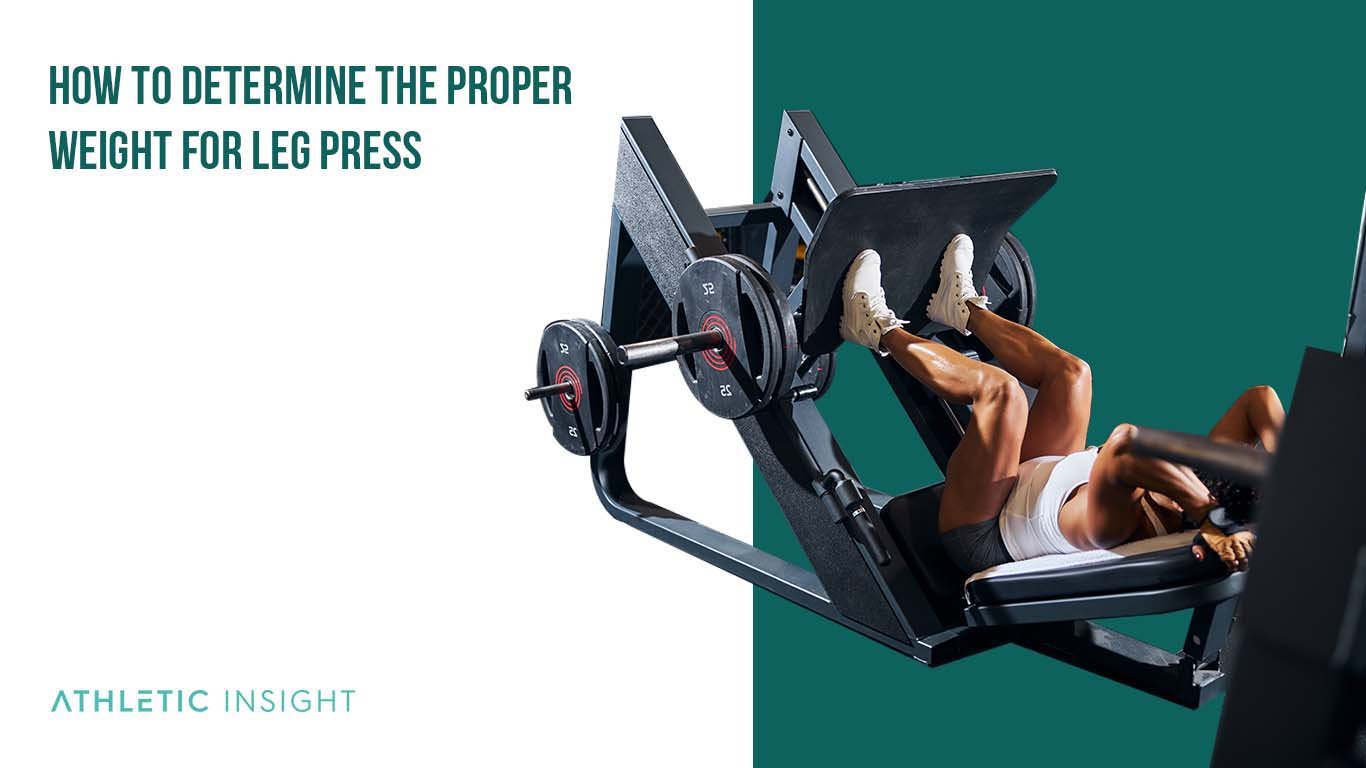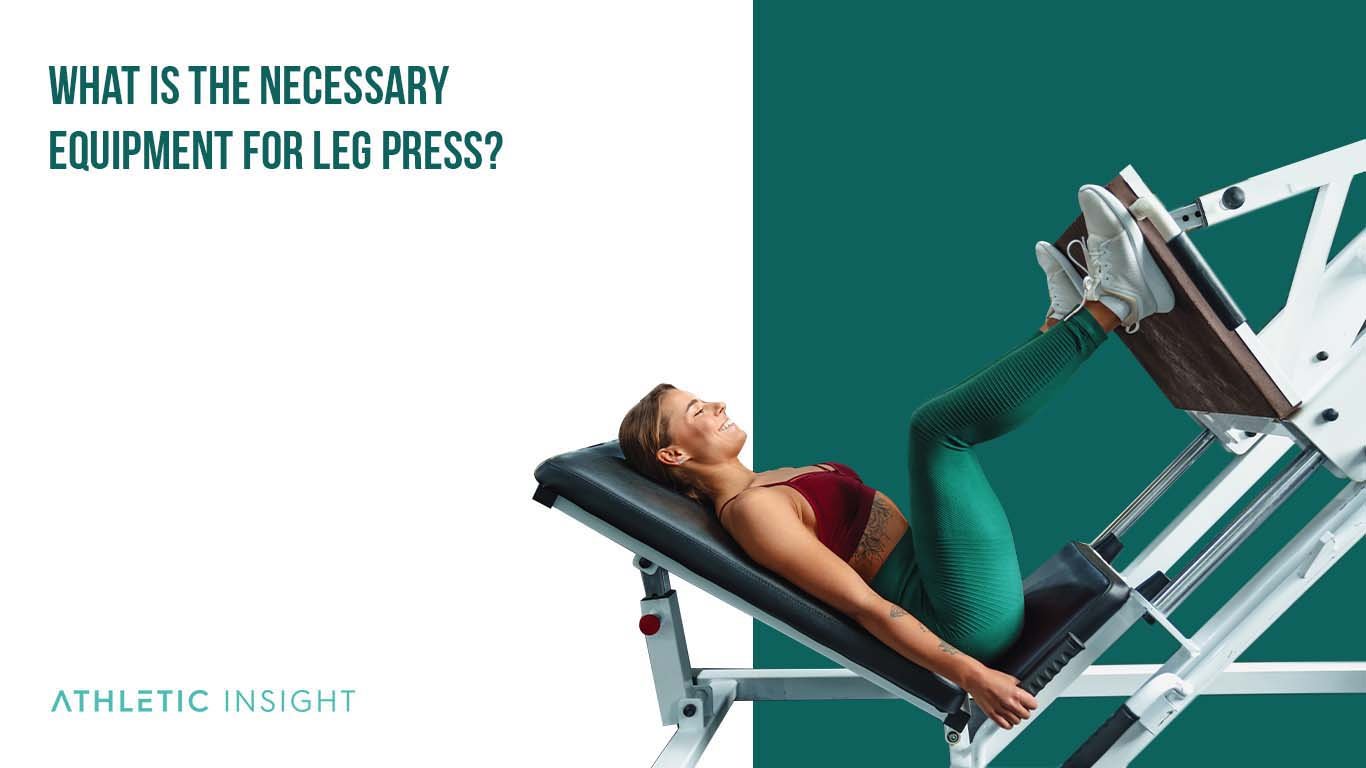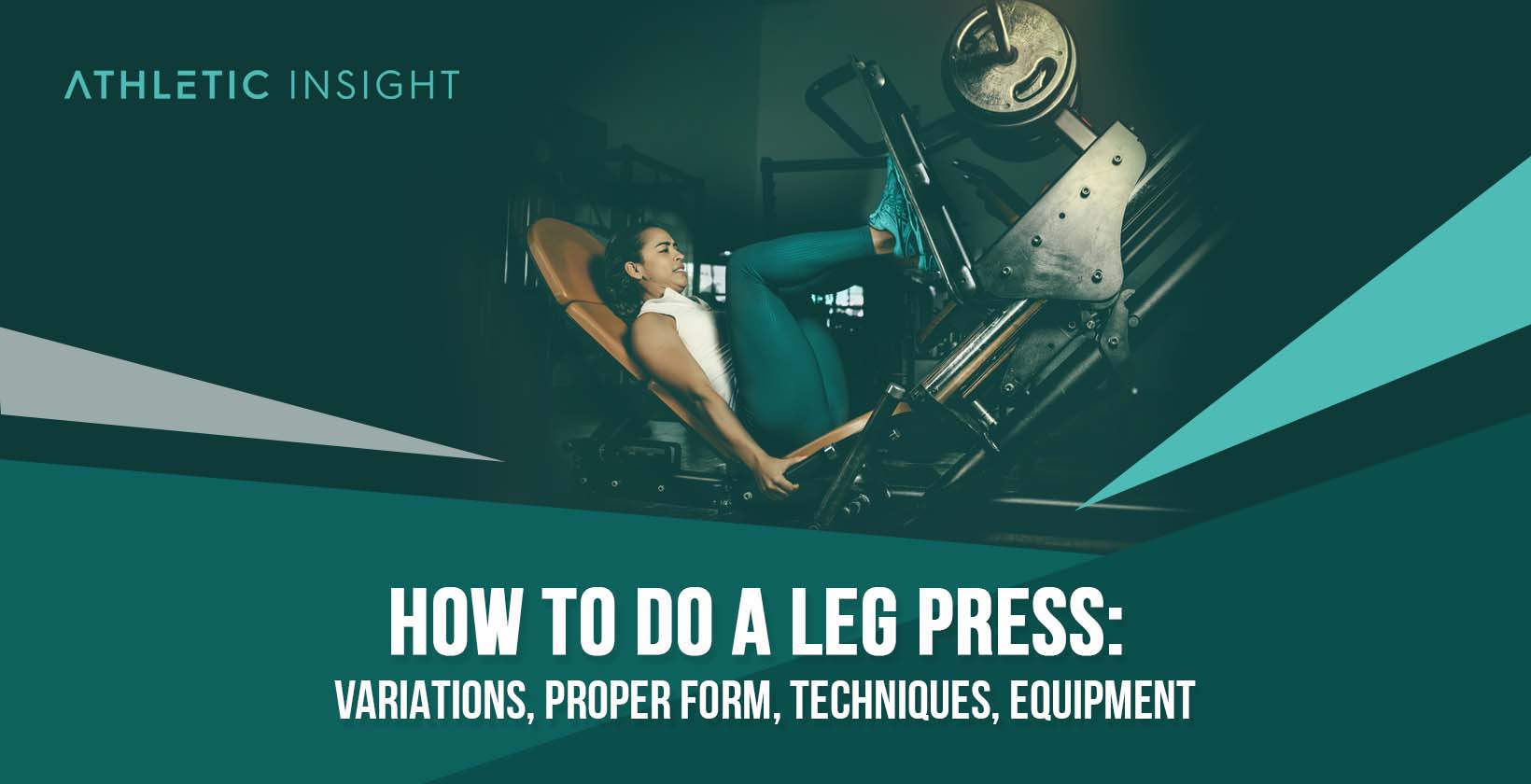The leg press is a seated compound exercise in which an individual pushes weight or resistance away from their body, using their legs. The leg press works the quadriceps and the gluteal muscles and is performed using a leg press machine. The leg press machine is a piece of lifting equipment that is used to perform the leg press.
While the leg press machine is utilized to develop the quadriceps and gluteal muscles, it actually aids in developing the entire lower body. Secondary muscles, such as the core and lower back also benefit from this beginner-friendly exercise.
The leg press machine is an effective exercise for any athlete looking to gain strength and power in the lower body, as well as increase the size and definition of the muscles. That is why both bodybuilders and strongmen use the leg press, as it is multi-beneficial.
While the leg press is low risk, with a huge reward, there are a couple of risks when performing the exercise. That is why it is important to maintain a neutral spine, with the back straight throughout the entire lift. It is also important to keep the knees bent or else the weightlifter may risk hyperextending (or worse) the legs.
The common injuries of the leg press range from minor back pain, to major vertebrae damage. There have even been cases where the knees were locked out and the weight hyperextended them, causing the legs to buckle. As long as you are performing the leg press with perfect form, it is a great exercise for building strength and size in the lower body.
How to Perform Leg Press with Proper Form
There are two forms of the leg press. The first way in which the leg press can be performed is with the hack squat machine. The other type of leg press is achieved with a leg press machine. This second option is the more widely used option and is what most people refer to when mentioning the leg press.
The basic movement is the same for these two options, but there are some slight differences between them. The major difference is that you stand in the hack squat machine whereas the main leg press machine requires the individual to be in a seated position.
Proper form on the leg press machine consists of sitting back on the machine with the head and back flat on the padded seat. Your bottom should rest against the seat as well. As you place your feet on the footplate, ensure they are hip-width apart.
Keep your feet flatly planted on the leg press weight plate while holding onto any provided grips or handles. Press the weight with your legs, ensuring your knees remain slightly bent and unlock the pins holding the weight.
Slowly lower the weight until your legs form a 90-degree angle. Ensure your back remains straight here. Once ready, press the weight back to the starting position. Once you have accomplished this, we can dominate the leg press following a few more advanced techniques.
How to Dominate the Leg Press Technique
Here you can find the tips for leg press techniques.
- Sit on a leg press machine and place your legs on the platform in front of you.
- Position feet about shoulder-width apart while ensuring the back is straight.
- Inhale gently as you lower the platform to a 90-degree angle.
- Use your heels and quadriceps to push, ensuring to maintain a tight core.
- Exhale as you go back to the beginning position, ensuring not to lock the knees.
- Rep until your set’s repetitions are complete.
- Check the safety pins.
Using proper form to perform the leg press will help ensure that you are using the power and strength in the lower body, while also benefiting from the rewards. Also, when you are leg pressing, make sure to use the perfect form so that you can accomplish the exercise without injury or causing problems with your joints.
What Are the Benefits of Doing Leg Press?
There are many benefits to the leg press exercise. With proper leg placement, the leg press will strengthen the quads, improve balance, and develop the glutes, hamstrings and calves.
Did you know that doing leg presses with just one leg at a time is also beneficial? This movement targets stabilizing muscles and forces more balance on both sides of your body, which can also help you achieve the following benefits.
1. Develops Quadriceps
Good leg press form develops the quadriceps by forcing them to do all the work. This is because the leg press works your quads and glutes together, while squats (and other leg exercises like lunges) primarily target the quadriceps with some help from hamstrings and gluteal muscles.
2. Develops Gluteus Maximus, Hamstrings, and Calves
The seated leg press strengthens and develops the gluteus maximus by working it through a greater range of motion than traditional squats. It also targets the hamstrings and calves, which can be challenging to hit with other leg exercises.
3. Improves Balance
Doing single-leg leg presses will improve your balance and stability because you are working independently on each side of the body. The leg press machine gives you the ability to work on proper form while enhancing your balance and safety. Balance is essential as we age because one leg can be weaker than the other, leading to a fall.
Leg presses with perfect form will help you strengthen leg muscles and work on your balance as well. It is an excellent way for fitness enthusiasts to work out their legs without putting too much strain on their knees or back.
What Are the Main Leg Press Mistakes?
There are a few common mistakes people make with leg press that slow their progression and make them more susceptible to injury. They emphasize the importance of proper form to prevent these leg press mistakes.
- Common Injuries
- Letting the Feet Drift Outwards
- Locking Your Knees at the Top of the Movement
- Lowering the Plate too Far
- Not Having Your Feet on the Plate Properly
- Adding too Much Weight
1. Common Injuries
Common leg press injuries are pelvic floor strains, and knee and back injuries from the load being too heavy. Knee injuries usually occur as a result of damaged tissues and cartilage. Back injuries typically happen in the soft tissues of the lower back. Depending on the seriousness of these injuries, therapy and/or surgery may be required to correct them.
2. Letting the Feet Drift Outwards
When you let your feet drift outwards as you press the weight, you put unnecessary stress on the knees and can cause injury.
3. Locking Your Knees at the Top of the Movement
Locking your knees at the top of the movement slows muscle progression because it takes all the tension off the muscles being worked. It defeats the purpose of the activity.
4. Lowering the Plate too Far
When you lower the plate too far, your butt will start to roll up off the seat. When this happens, you run the risk of injuring your back or causing a problem with your lumbar disks.
5. Not Having Your Feet on the Plate Properly
Your leg press position is crucial to performing the movement safely and reaping the rewards of the exercise. If your heels are hanging off the plate, you put unnecessary stress on your knees and back.
6. Adding too Much Weight
You should always leg press with perfect form, regardless of how strong you are. Adding too much weight at once puts your body into a bad position that can be hard to recover from if something happens. Too much weight will almost always sacrifice proper form. It compromises safety and effective progression.
How to Determine the Proper Weight for Leg Press
The leg press machine has a weight sticker that tells you how much the plate weighs before adding the free weight plates. Use this to know how much weight you are actually pushing.

Also, read the directions on using the leg press machine to ensure you understand the movement. Beginners should aim to start at a weight that they can do for 12–15 reps without struggling. As you become more advanced, you will press more weight for fewer reps. A rule of thumb is to start at 50 percent of total body weight.
Which Muscles Are Involved While Performing Leg Press?
To achieve proper leg press form, one must understand how the machine works and which muscles are being worked.
- Quadriceps
- Hamstrings
- Gluteals
- Calves
Quadriceps
The quadriceps are the muscles located on the front of your thigh. They are responsible for extending the leg at the knee, which allows you to walk, run, jump, and leg press. The quadriceps include four individual muscles.
The rectus femoris is one of these four muscles that make up the quadriceps group. It attaches just above each knee to the hip bone and is responsible for extending the leg at the knee and flexing the thigh. The leg press benefits the quadriceps by overloading the muscle with weight. This can help to increase leg strength, enhance leg development, and prevent injury.
Hamstrings
The hamstrings are located on the back of your leg, just below your glutes. They hold the responsibility for bending your knee and helping you extend your hips. The leg press benefits the hamstrings by providing resistance as the leg is extended. This overload can help to increase hamstring strength, size and improve function.
Gluteals
Your glutes are a large muscle in your buttocks that helps stabilize your torso when your leg press. The Gluteus Maximus also assists with leg extension, hip extension, and abduction (moving the leg away from the midline). The leg press benefits the glutes by providing resistance as the leg is extended just as it does with the hamstrings. The overload increases gluteal strength and size.
Calves
The calves are the muscles on the back of your leg, below your knees. They are responsible for pointing your toes and ankle flexion. The leg press benefits the calves by providing resistance as the leg is extended as well. Calves will increase in strength and size.
What Are the Leg Press Variations?
A leg press variation is when you change up the leg press form in some way to target different muscle groups or in a way that further isolates select leg muscles. The main features of these variations of leg press are as follows.
Changing the height of your feet or legs can help determine which muscles are targeted more directly. Changing leg position changes the degree of hip flexion, abduction, and adduction (moving leg toward the midline), meaning that leg positioning will also affect how much pressure you feel from the weight.
If you are looking for some leg press position variations to consider, try one of the following six workouts.
- Standard Leg Press Foot Stance
- Wide Leg Press Foot Stance
- Narrow Leg Press Foot Stance
- High Foot Placement Leg Press
- Low Foot Placement Leg Press
- Snatch-grip Leg Press Leg Press
What Are the Phases of the Leg Press?
The phases of the leg press are the leg curl concentric phase and the leg curl eccentric phase.

The eccentric leg press phase is leg press leg preparation, where you lower the weight under control until your legs are at a 90° angle. During the eccentric phase, the muscle is activated and engaged as it lengthens under tension to absorb the shock of the weight.
The concentric leg press phase is where you push against the weight with both feet to bring it up to full extension while maintaining proper form throughout the movement. During the concentric phase, the muscles contract as they shorten to push the weight back up.
What Are the Leg Muscle Exercises with Leg Press?
One effective leg muscle exercise with the leg press is the single-leg press workout program that targets the quads specifically. It also engages the hamstrings and glutes, like the standard leg press. Here is how to perform the single-leg press.
- Begin with the right leg. Place your right foot on the leg press plate basket. Perform 10 reps.
- Repeat on the left leg.
- Rest for 90 seconds and then add 25 pounds.
- Repeat 10 reps on each side.
- Rest 90 seconds.
- Continue to add weight until you reach your max weight without compromising proper form.
- Try to perform at least 4 sets of 10 on each leg.
The prominence of the single-leg press is that it forces you to use greater control over the weight. Though you’re unable to use the amount of weight as you would with both legs, you are isolating the quads in one leg at a time to eradicate any imbalances.
When doing a best leg exercises with both legs, there is a risk of letting one leg push more weight. The single-leg press eliminates this. It also enhances strength, muscle mass, and agility in the lower body.
What Is the Necessary Equipment for Leg Press?
The necessary leg press equipment is the leg press machine and weighted plates. The leg press machine allows for adjustments so that you can perform leg presses at incline, flat, or declined leg press seat angles. The weight plates are used to increase the weight and resistance of the leg press machine.

What Are the Leg Press Related Facts?
Here are some leg press related facts to motivate you to do more of the workout.
- The leg press machine can be used to perform isolation workouts on the calves.
- Working out on the leg press machine will help you jump higher and run faster.
- The weight-bearing workout of leg pressing increases bone density.
- These facts are a great way to see how utilizing the correct leg press form can help improve your overall fitness and athleticism.
Does Leg Press Affect the Hormones?
Yes, the leg press does affect the hormones of your body. The two main hormones affected by the leg press are cortisol and the growth hormone. The leg press can help manage unhealthy cortisol levels over time, which means better overall body composition, less abdominal fat, and improved mental well-being.
Initially, cortisol increases during the workout, but after the workout is complete, levels start to drop. Combine that with the release of endorphins and one now has the ability to cope better with stress. Lower cortisol levels increase energy and workout performance which enhance muscle growth.
The leg press also helps increase the growth hormone levels by up to 16 percent, which is linked to increased lean muscle mass and better overall fitness. Growth hormone increases muscle strength because it is responsible for enhancing muscle mass through the stimulation of protein synthesis.
Does Leg Press Increase Testosterone?
Including leg presses in a workout routine can help increase testosterone levels linked to increased muscle mass and physical strength. Testosterone is a male hormone responsible for building and maintaining muscle mass and strength.
Throughout a comprehensive leg day routine, the leg press will help increase your endurance, stamina, and cardiovascular health. The benefits of increased testosterone levels include the following.
- Increased muscle mass
- Improved physical strength
- Better overall body composition
- Less abdominal fat
- Improved mental well-being and mood
Does the Leg Press Affect Mood?
Yes, the leg press affects moods. The leg press workout performed on the standard type of leg press machine can also cause the release of endorphins, which are hormones that interact with the brain to reduce pain and create a feeling of euphoria.
Is the Leg Press a Military Movement?
No, the leg press is not a Military Exercises. However, performing the workout will increase stamina, leg strength, and agility, which soldiers need to perform at their best.
Is the Leg Press Dangerous?
No, the leg press is not dangerous when performed correctly using leg press machines. It is a safe and easy-to-use exercise that can help improve overall fitness levels. Incorrect leg press form can lead to injury, so always utilize proper technique when performing the movement.



